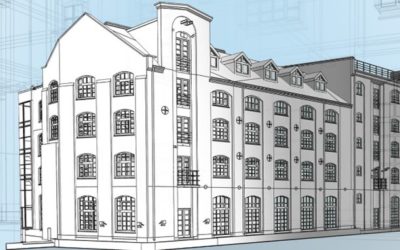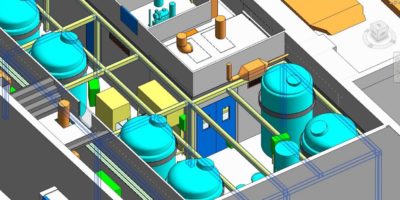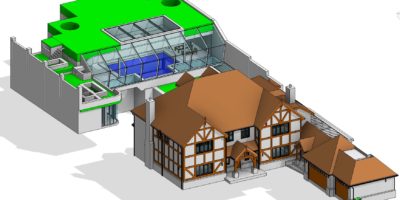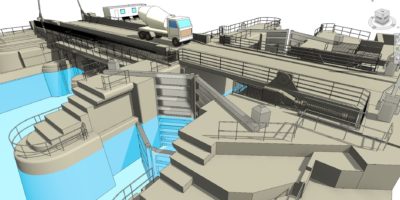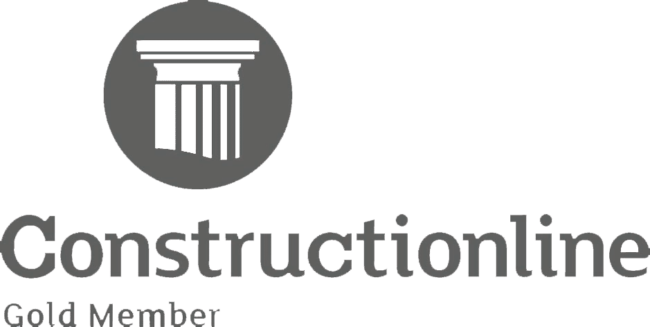Building Information Modelling (BIM)
Building Information Modelling (BIM) is a process that supports architects, engineers and contractors to unlock greater efficiency in construction projects by providing detailed digital representations.
The digital transformation in construction aligns with how we embrace the gains in efficiency through technology to manage projects in the built environment. BIM sets out a process through a series of specifications to maximise collaboration, productivity and increase the lifespan of the clients’ asset.
The BIM model is not a physical object or entity it is a digital platform for how consultants share project data in a common data environment. The model brings together all the information in a virtual environment that everyone involved in the project can access. The data or model can include specifications, schedules, environmental reports and cost planning. The 3D drawings of the proposed or existing building/structure are also uploaded into the common data environment. This 3D model is linked to the shared data and becomes a live interactive graphical representation of the asset. The 3D model can be managed to evaluate data once imported, visualise the impact and monitor any changes particularly at design and construction stage.
What are the benefits of BIM?
- Improved collaboration : Surveyors can communicate in real-time with multiple trades, through single project management system. All parties involved in the project are always up to date with developments and vital information is not overlooked due to miscommunication.
- Quicker and more efficient : The BIM process allows us to collect, process and present data quicker and more efficiently with more accurate data.
- BIM can help clients visualise the evolution of their asset from design to operation.
- Increased productivity through each key stage minimises rework and potential conflicts between consultants in design, construction and operation.
- Risk is negated by the common data environment shared through a BIM digital model.
- It highlights any clash detection in design and reduces significant changes during the construction stage, saving cost, time and unnecessary delays.
- BIM supports a greater strategy in sustainability. In the early stages, an environmental analysis can be undertaken to explore the building orientation, impact on the neighbourhood, energy use and daylight.
Want to discuss how Technics Group can support your next project? Please call our head office on 01483 342 352 or click here to contact us
Why choose Technics for your BIM projects?
Expertise….
Using the latest technology, our BIM experts have extensive experience of creating high quality, precise BIM models from point clouds. Our projects are BIM ready, and we are following BIM methodology if the project requires. Our models can be developed to align with PAS1192 / ISO 19650.
One Stop Solution…
At Technics we can offer the full Scan to BIM service. Our expert surveyors can take care of capturing the precise, high quality data before handing over to our BIM technicians to create the 3D models. Our team of surveyors can also provide topographical and utility surveys which can be incorporated into the BIM model.
Customer Focus…
We have a dedicated team that work closely with clients to fully understand the project requirements. We take the time to understand the client, the project purpose, the long-term plan for the asset and how our data will be used by each consultant which saves both time and money.
Technics is involved from the very early stages of the development process. With our specialist range of services, we can provide support in understanding the value of using valid and accurate data, geometry and information in a format that you can use throughout the asset lifecycle.
Tailored Approach…
To ensure we understand the client’s data requirements, Technics consults on an individual basis to create a bespoke specification of works and an elements schedule. Our specification highlights the achievable accuracy, our methodology, the level of detail and final data output and format. This ensures that clients will receive the appropriate data at the appropriate project stage tailored to the exact requirements of the project.
Collaboration…
We can share data with clients and other project stakeholders using Common Data Environment (CDE) as outlined in the Employers Information Requirements (EIR) document or as specified in the pre-contract BIM Execution Plan (BEP) that we can prepare as a response to the former. This provides better collaboration between project stakeholders and enables an early clash detection which in turn reduces the costs of the project.
Want to discuss how Technics Group can support your next project? Please call our head office on 01483 342 352 or click here to contact us.

